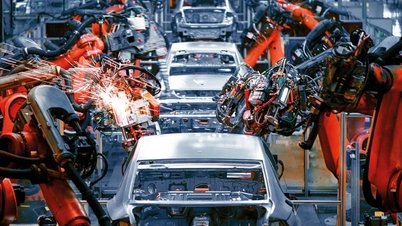Scientists have developed an artificial neuron that can mimic the activity of many different areas of the brain - from visual processing to planning and controlling movement.
This is considered an important step forward in the field of neuromorphic computing, aiming to create machines capable of sensing and reacting to the world like humans.
In a paper published in Nature Communications, an international team led by Loughborough University (UK), with the participation of the Salk Institute and the University of Southern California, said their new artificial neuron – called a “transneuron” – can flexibly switch between the activity patterns characteristic of visual, motor and premotor neurons.
“Is the human brain a mysterious device beyond our reach, or can we recreate it electronically – even build something more powerful?” asks co-author Professor Sergey Saveliev.
He said the team had demonstrated that a single unit could be tuned to mimic the behavior of many different types of neurons, opening up the possibility of creating electronic chips that perform complex brain-like functions in compact devices using just a few artificial neurons.
To test this, the scientists injected electrical signals into the transneurons and measured the output pulses, which were then compared to real nerve impulses recorded from the macaque monkeys’ brains. Three brain regions were chosen: the visual processing area, the motor control area, and the action preparation area – each with a very distinctive “pulse pattern.”
By simply changing the electrical settings, a single transneuron can reproduce all of these impulse patterns with 70-100% accuracy.
At the heart of the transneuron is a "memristor," a nano-sized component that changes state when an electric current is passed through it, helping it "remember" previous signals—similar to the way neurons learn from experience.
Inside the memristor, silver atoms create and break microscopic bridges to generate electrical pulses. Thanks to this property, transneurons can be “tuned” to behave like different brain regions without the need for software.
Scientists believe that this technology can be integrated into a “cortex on a chip”, creating the basis for an artificial nervous system that helps robots sense and adapt in real time. The device also promises applications in brain research and communication with the human nervous system./.
Source: https://www.vietnamplus.vn/noron-nhan-tao-mo-phong-nhieu-vung-nao-dot-pha-huong-toi-robot-giong-nguoi-post1077800.vnp


















































































































Comment (0)